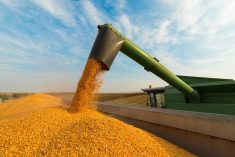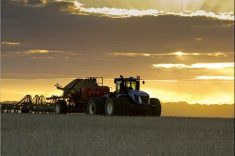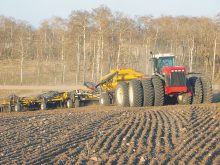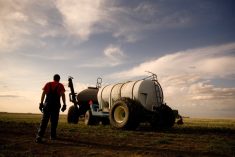CNS Canada — With the 2015-16 growing season fast approaching in Western Canada, decisions on how many acres will be seeded to canola remain up in the air.
“I think a lot of people aren’t getting a lot of feedback from growers, as they haven’t really indicated a lot of big changes in acres,” said Ken Ball of PI Financial.
Despite a lack of information from farmers, there are many estimates by industry professionals floating around — but they also vary widely.
Some believe acreage could be as low as 19.33 million acres, a decline of five per cent from the 20.32 million seeded last spring.
Read Also

U.S. grains: Soy futures post biggest monthly gain in nearly five years on China trade optimism
U.S. soybean futures climbed to a 15-month high and posted their biggest monthly gain in nearly five years on Friday following a rally fueled by the prospect of revived exports to China.
Those who estimate lower seeded area are citing rotational issues, problems with clubroot and more interest in growing soybeans for the anticipated decline.
Farmers are also becoming fed up with the cost of seed and fertilizer, Mike Jubinville of ProFarmer Canada said, adding that prices under $10 per bushel mean there’s more risk than reward to growing canola.
If the market outlook becomes more positive — above $10 a bushel — farmers will probably grow more canola, he said.
Other industry officials believe canola acreage will be fairly similar to last year’s.
“We know the acres on canola are going to be pretty much similar to a year ago. They might be down two per cent or up two per cent,” said Errol Anderson of ProMarket Communications.
Ball agreed acres will likely be similar to last year, but predicted a slight increase compared to 2014. Agriculture and Agri-Food Canada is also forecasting a jump, estimating seeded area at 20.76 million acres in its February supply and demand forecast.
“The price has offered some hedging opportunities here, largely bolstered by the Canadian dollar. A lot of growers do like to get something locked in before they seed just for security,” Ball said. “They’re willing to grow it because they can pre-sell 20 to 30 per cent of it at a respectable price compared to what it was a few months ago.”
Canola could be taking some acres away from wheat because of the more positive hedging opportunities for the oilseed.
“Farmers are really struggling right now to be able to use the wheat market to lock in any prices in advance of seeding,” Ball said.
“They don’t like the way merchants are quoting the price; they find it very bizarre. As a result, some of them for that reason alone are shying away from wheat because they just don’t want to do business with the commercials on wheat.”
— Terryn Shiells writes for Commodity News Service Canada, a Winnipeg company specializing in grain and commodity reporting.












